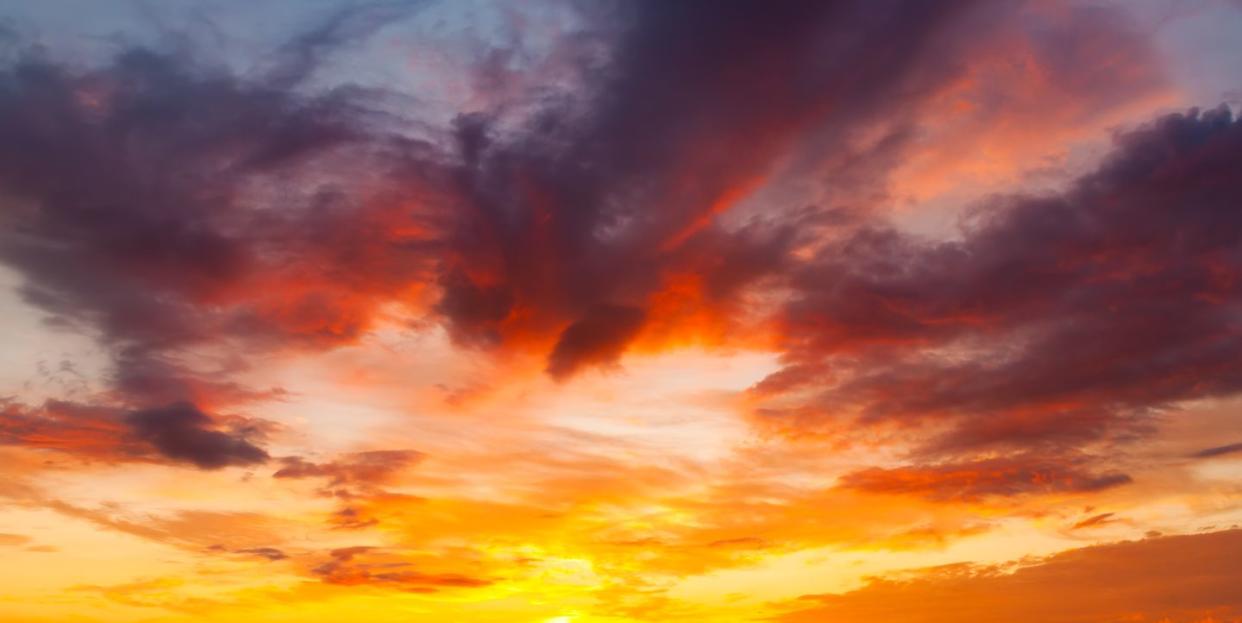A Plume of Saharan Dust is Expected to Create Colorful Sunsets in Parts of the U.S.

A plume of Saharan dust is making its way to the Caribbean and the Gulf states in the next several days.
With large amounts of dust in the sky, sunrises and sunsets are expected to be particularly colorful and vivid.
The dust can also spur respiratory issues due to lower air quality.
A plume of dust from the Sahara Desert is traveling nearly 5,000 miles to the United States, bringing dry air and the potential for some really gorgeous sunsets, depending on where you live.
Saharan dust tends to make its way over the Atlantic Ocean to parts of the Gulf states during the summer, hitting its peak around late June to the middle of August. The phenomenon, referred to as the Saharan Air Layer, forms in the African desert during the end of spring and into the beginning of fall and takes up a 2- to 2.5-mile thick layer of the atmosphere.
Parts of the Caribbean are expected to get the dry dust this weekend, while states closest to the Gulf—including Alabama, Georgia, Florida, Texas, and Louisiana—are forecasted to experience the Saharan dust by this upcoming week, per The Weather Channel.
Fire in the sky tonight Saharan dust bringing out the sunset colors pic.twitter.com/wofgXGgtnm
— Steve Weagle (@SteveWeagleWPTV) June 23, 2019
The presence of such a large amount of dust has been known to prevent the development of tropical storms during the hurricane season. National Oceanic and Atmosphere Administration officials say the dry air from the Saharan dust has about 50% less moisture than that of the average tropical atmosphere during this time of year. With nearly half the moisture removed, the dry air actually creates downdrafts around the tropical storm, essentially weakening it.
Amazing! This happens mostly this time of the year.The positive outcome is that it puts hurricanes on hold temporarily, and it creates gorgeous colors at sunrise and sunsets that are so surreal. Call it a gift from the Sahara.😊Check out last year's sunset with the Sahara dust.❤ pic.twitter.com/24Zd98grH6
— Angela Brent-Harris (@AngelaBrentHar1) June 17, 2020
Particles are usually so tiny you can barely see them, but with a burst of dry dust at this capacity, residents in select states will be able to see its stunning effects. Depending on your location, the Saharan dust will create a hazy sky as it passes over select areas, with potential for intensely red and orange sunrises and sunsets, according to The Weather Channel.
This summer, the gulf coast gets some Saharan Dust which makes for super cool sunsets like tonight’s! Read more about mineral dust and why it’s important here: https://t.co/WoOcH2K1sM pic.twitter.com/pfyZ2ekhKv
— Mallory Gaspard (@mallorygaspard) June 18, 2020
These vivid colors come out to play when the sun is particularly low and its beams are spread out. That’s when the sun’s light bounces off the dust particles in a process called scattering, illuminating the air with hues of yellow, orange, and red.
That said, with so much dust comes a whole new set of issues for allergy sufferers. Dust particles can find their way into your nose and eyes, causing itchy, watery eyes, sneezing, coughing, and shortness of breath. Pulmonologist at UT Health San Antonio, Dr. Anoop Nambiar told Texas NPR radio station TPR that the Saharan dust affects small children, the elderly, and those with respiratory issues like asthma. If you live near the Gulf states during the event and experience breathing or allergy symptoms, he suggests staying inside (or wearing a mask) when possible.
If the particles don’t seem to bother you, it’s a gorgeous sight to see—so be sure to safely enjoy the views!
Support from readers like you helps us do our best work. Go here to subscribe to Prevention and get 12 FREE gifts. And sign up for our FREE newsletter here for daily health, nutrition, and fitness advice.
You Might Also Like

